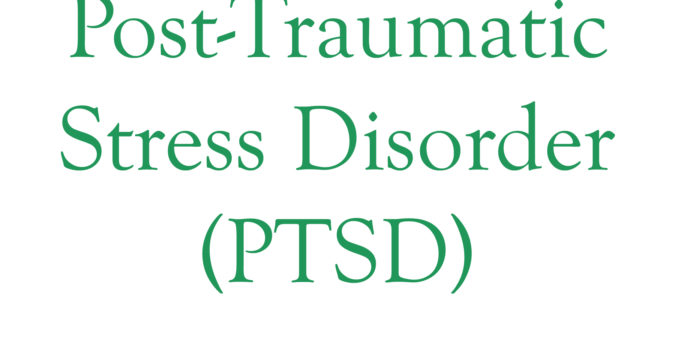Post-Traumatic Stress Disorder (PTSD) is a mental health condition that can develop after experiencing or witnessing a traumatic event. It is characterized by a range of symptoms that persist beyond the traumatic event, including intrusive memories, flashbacks, nightmares, avoidance of reminders of the event, negative changes in thoughts and mood, and heightened arousal or reactivity. PTSD can significantly impact an individual’s daily life, relationships, and overall well-being.
The causes of PTSD are primarily linked to experiencing or witnessing a traumatic event.
Here are some factors associated with the development of PTSD:
1. Traumatic events: Various types of traumatic events can trigger the development of PTSD, including but not limited to military combat, sexual assault, physical assault, natural disasters, accidents, childhood abuse, or witnessing violence. The severity, duration, and proximity to the individual can influence the risk of developing PTSD.
2. Biological factors: Some individuals may be more vulnerable to developing PTSD due to biological factors. This includes genetic predispositions, differences in brain structure and function, and imbalances in stress-related hormones and neurotransmitters.
3. Individual factors: Certain individual characteristics may influence the development and severity of PTSD. This includes a history of prior trauma, a family history of mental health conditions, pre-existing mental health conditions, a lack of social support, or ongoing stressors in one’s life.
4. Coping mechanisms: The ways in which individuals cope with traumatic events can impact the development of PTSD. Avoidance or emotional suppression may hinder the processing of trauma and increase the likelihood of developing PTSD symptoms.
Treatment for PTSD typically involves a combination of psychotherapy, medication, and support.
Here are the most common types of treatment:
1. Psychotherapy: Different types of therapy can be effective in treating PTSD. Cognitive-Behavioral Therapy (CBT) is often used and focuses on identifying and challenging negative thoughts and beliefs related to the traumatic event, as well as developing healthy coping strategies. Prolonged Exposure Therapy (PE) and Eye Movement Desensitization and Reprocessing (EMDR) are specific therapies designed to help individuals process traumatic memories and reduce distressing symptoms. Other therapies such as cognitive processing therapy (CPT) and narrative exposure therapy (NET) may also be used.
2. Medication: Certain medications, such as selective serotonin reuptake inhibitors (SSRIs) or other antidepressants, can be prescribed to help manage symptoms of PTSD, particularly when combined with therapy. These medications can help regulate mood, reduce anxiety, and improve sleep.
3. Supportive care and self-help strategies: Creating a supportive and understanding environment is crucial in the treatment of PTSD. Support from family, friends, and support groups can provide validation, empathy, and encouragement. Self-help strategies, such as relaxation techniques, mindfulness, and stress management techniques, can also be beneficial.
4. Education and psychoeducation: Understanding PTSD and its symptoms can empower individuals and help them navigate their recovery journey. Psychoeducation involves learning about the condition, identifying triggers, and developing coping strategies.
5. Adjunctive therapies: Complementary and alternative therapies, such as art therapy, animal-assisted therapy, yoga, and acupuncture, may be used as adjunctive treatments to help individuals manage their symptoms and promote overall well-being. These therapies can be used in combination with other evidence-based treatments.
It’s important for individuals with PTSD to work closely with healthcare professionals to develop an individualized treatment plan that suits their specific needs. Treatment plans may be tailored to address co-occurring conditions, individual preferences, and the severity of symptoms. Regular monitoring, adjustment of treatment, and ongoing support are crucial for managing PTSD effectively.


